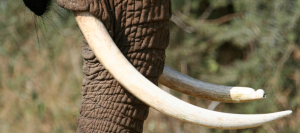The Race for Ivory is on

PHOTO CREDIT: © BECKY WALTER
PRESS RELEASE
July 12th 2011
Elephant expert Dr Iain Douglas-Hamilton and his team sound the alarm
on highest elephant poaching in Samburu in 14 years
(Nairobi, Kenya) – On Tuesday, July 12th, gunshots were heard near Samburu National Reserve. A few hours later, the KWS rangers who responded immediately to the warning, found a dead elephant. The carcass was that of Khadija, the last mature female elephant from the Swahili Ladies family in Samburu. Khadija leaves behind eight orphans, a story that is becoming way too familiar in northern Kenya. Ironically, Khadija had been treated two weeks earlier for bullet wounds and had survived the attack. This time, she died as she hobbled near the river, with four fresh bullets in her body. By midnight, under the full moon, her tusks had been cut out and the collar she was wearing had been destroyed and buried in the sand.
The story of Khadija is just one amongst many in this part of Kenya. A report recently released by Save the Elephants warns that during the first five months of 2011, poaching of elephants in the Samburu / Buffalo Springs region, has reached an all-high level – the highest recorded in the last 10 years. The affects of poaching on the elephant population of Samburu are severe. The number of mature males has consistently declined and mortality has impacted over half of the family units. The report shows that 14% of the social groups do not contain a breeding female over the age of 25 years and are comprised of multiple orphan calves. With many of the large bulls poached, the elephant population is now so skewed that 70% of the population is female. These social impacts are serious and are a grave concern for the long-term future of the population.
There is a real battle on the ground, being fought by the rangers of the Kenya Wildlife Service. Yesterday, KWS made an arrest of three men on the Isiolo road carrying nine pieces of ivory weighing 50 kilograms. But unfortunately, whenever an arrest is made, the sentence carried out by the Kenyan government tends to be minimal and poachers are often back “in the bush” within 48 hours. Save the Elephants, the Northern Rangelands Trust and KWS are uniting to provide more resources on the ground to protect elephants and other wildlife. Anti-poaching units must now be deployed systematically, as the race for ivory is on. The facts are that the price of ivory has doubled in the last two years and that the demand coming from the Far East and China is what is driving this increase in poaching.
“In the first 6 months of this year rates of illegal elephant killing on the south near Buffalo Springs Reserve have reached new record levels,” said Dr. Iain Douglas-Hamilton. “Samburu has been a success story where elephants have been recovering from the excessive poaching of the 1970s and 1980s right up until 2008. It has been one of Africa’s few safe havens for elephants thanks to KWS law enforcement. However, the new poaching spike, driven by new demand, is threatening one of the most peaceful elephant populations in Africa with highly habituated trusting animals.”
As the clock is ticking towards Kenya’s July 20th burning of five tonnes of contraband and worked ivory of African elephant, seized in Singapore in 2002, Save the Elephants is calling on the international community to help stop this slaughter. Elephants are not the only species affected: the poaching of rhinos is also at an all-time high.
The demand must be stopped then the killing can too.
# # #
Photos are available upon request. Please contact Gemma Francis at [email protected]
# # #
Save the Elephants aims to secure a future for elephants and sustain the beauty and ecological integrity of the places they live. Visit www.savetheelephants.org
Contact: Dr Iain Douglas-Hamilton
Save the Elephants
+254 / (0) 722 204868
[email protected]

